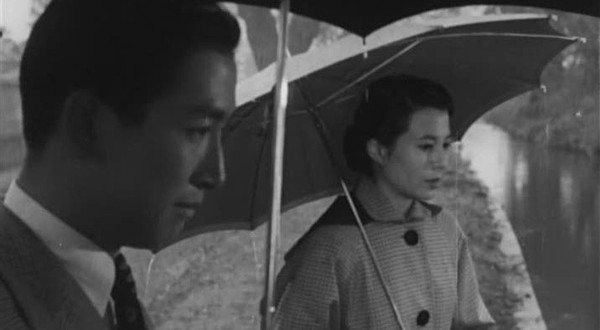« Coffee Break | Main | The Psychopath »
April 10, 2018
Tanaka Kinuyo: Nation, Stardom and Female Subjectivity

Edited by Irene Gonzalez-Lopez and Michael Smith
Edinburgh University Press - 2018
Please note that all Japanese names in this review will be in western format, with personal name followed by family name.
This is the first book in English on the Japanese actress and director, Kinuyo Tanaka. Unlike some book made up of chapters by different scholars, this is generally a more unified effort with apparent coordination regarding the presentation of Tanaka's history as an actress and director, as well as how her work fits in within the context of Japanese history. What we have is an overview, with discussion of even the best known films as an actress limited to a couple of paragraphs, and chapters devoted specifically to four of the six films directed by Tanaka. In other words - a good start.
Tanaka's career spanned more than fifty years. Born in 1909, her first film appearance was in 1924 at age fourteen. Her last role was in 1976, one year prior to her death. Mostly known for her work with Kenji Mizoguchi in the late Forties through early Fifties, Tanaka also made films under the direction of Hiroshi Shimizu, Yasujiro Ozu, Mikio Naruse, Akira Kurosawa and even a late career appearance in Yoji Yamada's Tora-san series. What is discussed here as an actress is the ways Tanaka played roles that varied based on the changes of women's roles within Japanese society as a result of the various social and historical forces. Also an examination of Tanaka as a star, the actor as auteur, where there were certain expectations that dictated her behavior in the narrative, especially those films with Tanaka's personal name, Kinuyo, as part of the film title. Also looked at is the tension with Tanaka expected to represent a certain type of Japanese woman.
While several of Tanaka's films as an actress are easily accessible, her work as a director takes a little more effort for first-hand inquiry. Two of her films, Love Letter and The Eternal Breasts are available with English subtitles on Youtube. The last of her six directed films, Love Under the Crucifix was found as an Australian DVD. Curiously, while a couple of the articles mention Dorothy Arzner, the female director who worked with female screenwriters, similar to Tanaka, no mention is made of Ida Lupino. While parallels are not exact, both Tanaka and Lupino began their respective film careers at about the same ago, and both turned to directing in anticipation of substantial roles lessening as they got older. One might argue similarities in films about women force to live in the margins, Lupino's Outrage and Tanaka's Love Letter, as well as both having stories of a woman's medical crisis with Never Fear and The Eternal Breasts respectively. The Eternal Breasts and Tanaka's similarity to Lupino is discussed further in Senses of Cinema.
Where I do take issue with the chapters on Tanaka as a film director is that there is no in depth discussion on the role of Christianity in her films. What makes this significant and highly unusual for a Japanese filmmaker is that reference to Christianity appears in the three films I've seen. Near the conclusion of Love Letter, "He who is without sin . . ." is quoted to a man unforgiving of a woman who turned to prostitution for survival. A character has Christian funeral service in The Eternal Breasts. Taking place at the end of the 16th Century, Love Under the Crucifix is about Japanese Christians at the time Christianity was banned from Japan.
Also, while Tanaka may not have the identifiable visual style of someone like Ozu, what I noticed from the three films seen is that she will use framing devices during key moments. In Love Letter, when Reikichi and Michiko are reunited for the first time following World War II, they are seen framed through the window of the train they were about to board. In The Eternal Breasts, Fumiko, hospitalized for breast cancer, walks toward the camera in a long tracking shot, ending with her standing in front of the bars of the morgue. The interior set design of walls and screens serves as a visual commentary on the relationship of the characters in Love Under the Crucifix, most notably when Gin states her love for Ukon, with both in front of a large, open entry to her house.
It would appear that English language scholarship on Kinuyo Tanaka is just beginning. In addition, this volume is helpful in better understanding some of the outside forces that also played a part in the history of Japanese cinema.

Masayuki Mori and Yoshiko Yuga in Love Letter (1953)
Posted by Peter Nellhaus at April 10, 2018 02:53 PM
